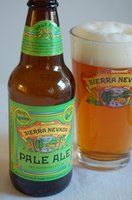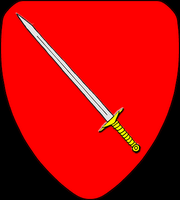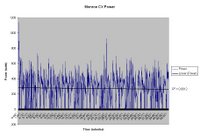The multivariant quadrant analysis tool allows me to check this by comparing the effort in a race with one in practice in terms of circumferential pedal velocity (m/s) versus average effective pedal force (N). I broke down the quadrants in a previous post but here they are again:
Q1=high force and high velocity. At the extreme, this would represented by sprinting, but most any extended supra-threshold effort on level ground (e.g., attack or bridge attempt during a race) would entail "quadrant I pedaling".
Q2=high force but low velocity. Typically, "quadrant II pedaling" occurs when climbing or accelerating, especially from a low speed.Q3=low force and low velocity. Rides that entail a very large percentage of pedaling that falls into "quadrant III" would typically be those used for recovery or for social purposes (e.g., coffee shop rides), or for recovery in a race after an attack or sitting in.
Q4=low force but high velocity. Racing may also involve a significant amount of such low force, high velocity pedaling, especially during events in which there is a frequent need to accelerate rapidly (e.g., criteriums). (Coggan, Andrew, 2005. http://www.cyclingpeakssoftware.com/power411/quad.asp)Here is the comparison from a 50.6 minute practice session yesterday to the last race in Marietta which was 47.5 minutes long. These efforts were conductted on two different courses but both reflected largely solo efforts.
A
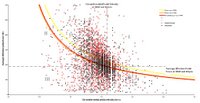 B
BPlot A shows all of the data including zeros and plot B has the zeros removed and reflects pedaling power.
Observations:
Observations:
- Both plots show that most of the efforts are concentrated in Q2.
- The most common power points are concentrated between 250-350W with a significant concentration between 300-350W. Above this value the points get more scattered.
- The practice data is more scattered than the race data.
- The practice data shows more points above the 350W curve.
- The practice data also shows more Q3 points which reflects low power and more "recovery" efforts.
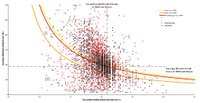




 Today was a race on sort of "home turf" since a bunch of us practice there each week. Daryl always changes the course and today was no different keeping it real with mostly grass, the nice hill climb, famous hill of pain dirt run-up, and the long stretch of pavement. He did not make the weather and it was a chilly 42 degrees or so with the wind whipping and gusting all over the course.
Today was a race on sort of "home turf" since a bunch of us practice there each week. Daryl always changes the course and today was no different keeping it real with mostly grass, the nice hill climb, famous hill of pain dirt run-up, and the long stretch of pavement. He did not make the weather and it was a chilly 42 degrees or so with the wind whipping and gusting all over the course.
